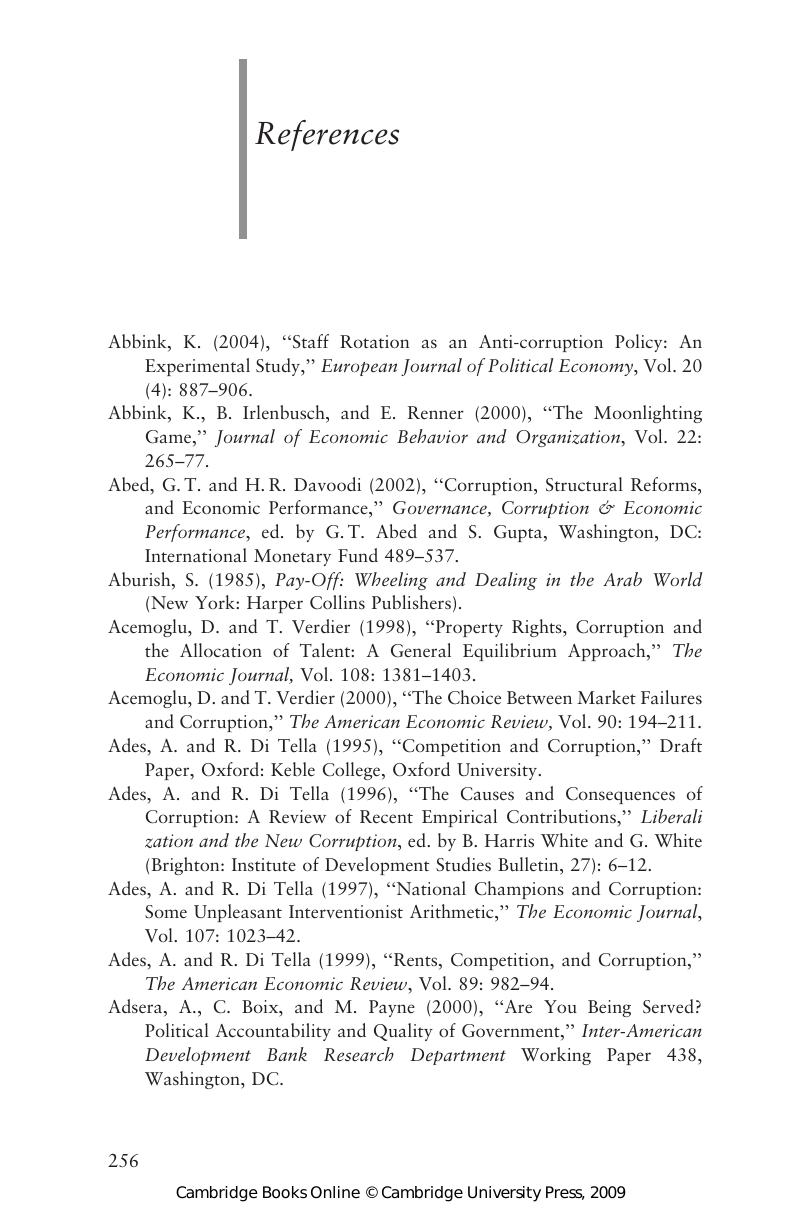Book contents
- Frontmatter
- Contents
- List of boxes
- Acknowledgements
- A roadmap to this book
- 1 Introduction
- 2 Enemies of corruption
- 3 What is bad about bureaucratic corruption? An institutional economic approach
- 4 The dilemma of the kleptocrat: What is bad about political corruption?
- 5 Corruption and transactions costs: The rent-seeking perspective
- 6 Making corrupt deals: contracting in the shadow of the law
- 7 Exporters' ethics and the art of bribery
- 8 How confidence facilitates illegal transactions: An empirical approach
- 9 Corrupt relational contracting
- 10 Concluding thoughts
- Appendix: Technical Details to the Transparency International Corruption Perceptions Index
- References
- Subject index
- References
References
Published online by Cambridge University Press: 05 November 2009
- Frontmatter
- Contents
- List of boxes
- Acknowledgements
- A roadmap to this book
- 1 Introduction
- 2 Enemies of corruption
- 3 What is bad about bureaucratic corruption? An institutional economic approach
- 4 The dilemma of the kleptocrat: What is bad about political corruption?
- 5 Corruption and transactions costs: The rent-seeking perspective
- 6 Making corrupt deals: contracting in the shadow of the law
- 7 Exporters' ethics and the art of bribery
- 8 How confidence facilitates illegal transactions: An empirical approach
- 9 Corrupt relational contracting
- 10 Concluding thoughts
- Appendix: Technical Details to the Transparency International Corruption Perceptions Index
- References
- Subject index
- References
Summary

- Type
- Chapter
- Information
- The Institutional Economics of Corruption and ReformTheory, Evidence and Policy, pp. 256 - 281Publisher: Cambridge University PressPrint publication year: 2007



